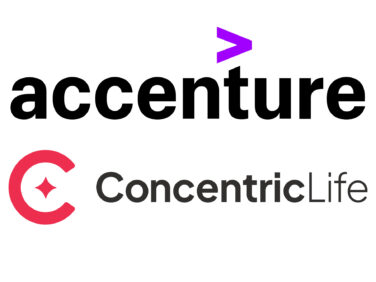DC Dispatch
State Settlements with Pharma at Record High The pharmaceutical industry has always faced ligation from state and federal governments over illegal activities, but an updated report from consumer advocacy group Public Citizen (bit.ly/PubCitReport) reveals that more settlements are being announced than ever before and the financial hit for pharma keeps going up. The report is an update to Public Citizen’s 2010 study on that past 20 years of illegal pharmaceutical industry activity. The past two years have not been kind to pharma—2012 has been a record year in penalties collected with pharma forking over $6.6 million to the federal government and states through just mid-July. Over that time, the most common lawsuit against pharma has been fraud against state Medicaid while cases involving the unlawful promotion of drugs have involved the largest penalties.
The South seems to be the most ligation happy. Since 1991, Arkansas, Louisiana, South Carolina and Texas have recovered a total of $2.3 billion in penalties, with Kentucky settling the most cases and Texas leading all states in settlements made possible by private whistleblowers. Meanwhile, a total of 17 states have recovered the equivalent, if not more, of their entire Medicaid fraud enforcement budgets. The federal government has also done quite well by recovering more in financial penalties in the past three and a half years than the previous 18 years combined. GlaxoSmithKline, Johnson & Johnson and Abbott were responsible for two-thirds of the settlements pharma paid during the past two years, with GSK topping the list with penalties totaling $3.1 billion.
Med Device
Battery-Less Implantable Devices
Implantable medical devices (such as pacemakers, cochlear implants and drug pumps) all have a similar problem—they require power. Batteries have always been the solution to this problem, but still present certain challenges. For starters, even the smallest battery can be bulky compared to the size of some of these tiny devices. Second, and perhaps more important, the life of a battery is finite, which necessitates replacing these devices before they lose power. A team of engineers at Stanford, however, may have found a solution that takes care of both problems. According to their findings published in the journal Applied Physics Letters, they have demonstrated the feasibility of a super-small, implantable cardiac device—it could fit on the head of a pin—that gets its power from radio waves transmitted outside the body.
The researchers were able to transfer wireless power using high-frequency radio waves to produce an electrical current in a millimeter-sized device implanted five centimeters inside the chest. This was previously thought to be impossible because scientists believed only low-frequency transmitters and large antennas could penetrate human tissue, which would be too impractical for implantable devices. The researchers discovered that high-frequency waves could penetrate human tissue by alternating waves of electric and magnetic fields. Thanks to this discovery, the researchers can see this technology being used to create permanent pacemakers, swallowable endoscopes and for precision brain stimulators, which are used to treat disorders such as Parkinson’s disease.
Doctors Doc
Physicians Find Social Media Helpful A recent study published in the Journal of Medical Internet Research revealed that physicians are taking advantage of social media in various ways to make their jobs easier. In the survey of 485 practicing oncologists and primary care physicians, one-third of respondents reported that their exploration of social media sites was an essential use of their time—57.5% said that social media was “beneficial, engaging, and a good way to get current, high-quality information.” That may explain why 61% used social media at least once weekly to scan or explore health information while about 24% felt the need to do it daily. However, actual engagement with the sites is less frequent as only about 14% contribute new content daily and 46% attempt to do it weekly. Of the two specialties surveyed, it was the primary care physicians who were more likely to be influenced by having access to peers. Social media also helped them to provide more value to their patients. Six in 10 said that using social media helps to improve the quality of care they provide to patients, while nearly the same amount (58%) claimed that it allows them to care for patients more effectively.
Sales Sector

Price’s Role in Pharmacy Selection
When it comes to selecting a pharmacy it is all about location, location, location—unless, of course, customers can find somewhere cheaper. In a new survey from AccentHealth consisting of 745 pharmacy patients who are part of AccentHealth’s consumer panel, one-third of respondents use more than one pharmacy with 63% citing location or convenience as the reason and 46% naming price as the deciding factor (see above). In fact, 58% would switch even if the savings are for less than $10 while only 15% would not switch regardless of price. “Convenience is king when choosing a pharmacy, but pricing consideration is a key secondary driver . . . so much so that 85% of patients surveyed report they would switch from their preferred pharmacy for some degree of cost savings at another retailer if their co-pay were to increase,” said Natalie Hill, VP Market Research at AccentHealth.
Insurance, however, does not factor much into the choice of pharmacy. Only 14% of patients reported that their insurance plans kept their pharmacy options to a shortlist—84% had to select from a limited network while 16% were forced into mail order. In the end, if everything is equal, the top three factors that go into pharmacy selection are convenience/location, customer service and wait time.
Trend Setting
Detailing to Med Device
MedTech physicians are yearning for more digital interaction with medical device companies. According to new data from the Digital MedTech Physician 2012 study from Manhattan Research, 45% of the 828 U.S. practicing physicians surveyed said that they would be interested in online promotional programs with medical device companies when they cannot see sales reps in person. Nearly half of respondents have already participated in some type of medical device online promotional activity, which can include self-guided medical device virtual details, medical device training, recorded or live web-based KOL or clinical expert led sessions about medical devices, or online live one-on- one information sessions with a medical device rep.
Meanwhile, 61% of those who have participated in an online activity say that they are using this resource more than they did a year ago. The five specialties that are participating in medical device online promotional programs the most include neurological surgery, interventional radiology, orthopedic surgery, plastic and reconstructive surgery, and spinal surgery.
FDA Update
An App Department?
Late last month, Rep. Mike Honda (D-CA) was expected to introduce a bill to the U.S. House of Representatives that would establish a special Office of Mobile Health at the FDA in order to make the agency better equipped to handle the rapidly evolving mobile marketplace and to help with the evaluation of medical apps, according to Kaiser Health News. The Healthcare Innovation and Marketplace Technologies Act (HIMTA) would also create a mobile health developer support program at the Department of Health and Human Services to ensure that developers are meeting all privacy requirements such as HIPAA.
New Indications
Abbott Laboratories’ Humira (adalimumab) was approved to treat moderate-to-severe ulcerative colitis in adults when immunosuppressant medicines like corticosteroids, azathioprine and 6-mercaptopurine have not worked. Meanwhile, the approved uses of Amgen’s Prolia (denosumab), was expanded to include a treatment to increase bone mass in men with osteoporosis at high risk for fracture.
Priority Reviewed Cancer Drugs
The FDA recently approved three new cancer drugs under its priority review program that provides an expedited six-month review for drugs that offer major advances in treatment or that provide treatment when no adequate therapy exists. Bayer HealthCare Pharmaceuticals’ Stivarga (regorafenib) was approved to treat patients with colorectal cancer that has progressed after treatment and spread to other parts of the body. Xtandi (enzalutamide), co-marketed by Astellas Pharma U.S. and Medivation, was approved to treat men with late-stage, castration-resistant prostate cancer that has spread or recurred, even with medical or surgical therapy to minimize testosterone. Finally, the agency approved Novartis’ Afinitor Disperz (everolimus) as a new pediatric dosage form of the anticancer drug Afinitor used to treat a rare brain tumor called subependymal giant cell astrocytoma (SEGA).






